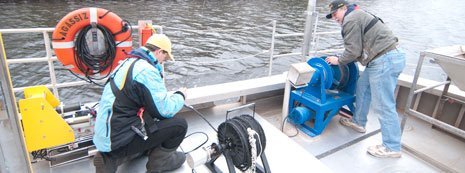Characterizations of foamed asphalt binders prepared using combinations of physical and chemical foaming agents
Document Type
Article
Publication Date
2-1-2019
Abstract
The objective of this study is to characterize the foamed asphalt binders prepared using different combinations of physical and chemical foaming agents. The foamed asphalt binders were investigated using the Rotational Viscosity (RV), Dynamic Shear Rheometer (DSR) and expansion ratio tests. Asphalt binders were also evaluated after short-term and long-term aging conditions. During the asphalt binder’s foaming process, the preheated binder was formerly foamed using a physical foaming agent (either water or ethanol), followed by the addition of sodium bicarbonate (NaHCO3) to improve the bubbling and the stability of the foam. Theoretically, through this process, numerous bubbles are generated by the vaporized ethanol or water, and the gases are released by NaHCO3, which significantly increases the volume of foamed asphalt. All foamed asphalt binders were produced at the same temperature, 100 °C, to diminish the inconsistency of binder-aging conditions during the preheating process. Overall, the results indicated that ethanol has better characteristics in lowering the viscosity of asphalt binders at low temperatures and is expelled from the asphalt binder after continuous heating at temperatures higher than its boiling point (78 °C). Although the addition of NaHCO3 has slightly increased the foamed binder viscosity that may affect its workability, it substantially lowers the volatile loss of foamed binders, as well as significantly improves the expansion ratio and the resistance to rutting.
Publication Title
Construction and Building Materials
Recommended Citation
Hasan, M. R.,
You, Z.,
Yin, H.,
You, L.,
&
Zhang, R.
(2019).
Characterizations of foamed asphalt binders prepared using combinations of physical and chemical foaming agents.
Construction and Building Materials,
204, 94-104.
http://doi.org/10.1016/j.conbuildmat.2019.01.156
Retrieved from: https://digitalcommons.mtu.edu/cee-fp/72


Publisher's Statement
Copyright 2019 Elsevier Ltd. All rights reserved. Publisher's version of record: https://doi.org/10.1016/j.conbuildmat.2019.01.156